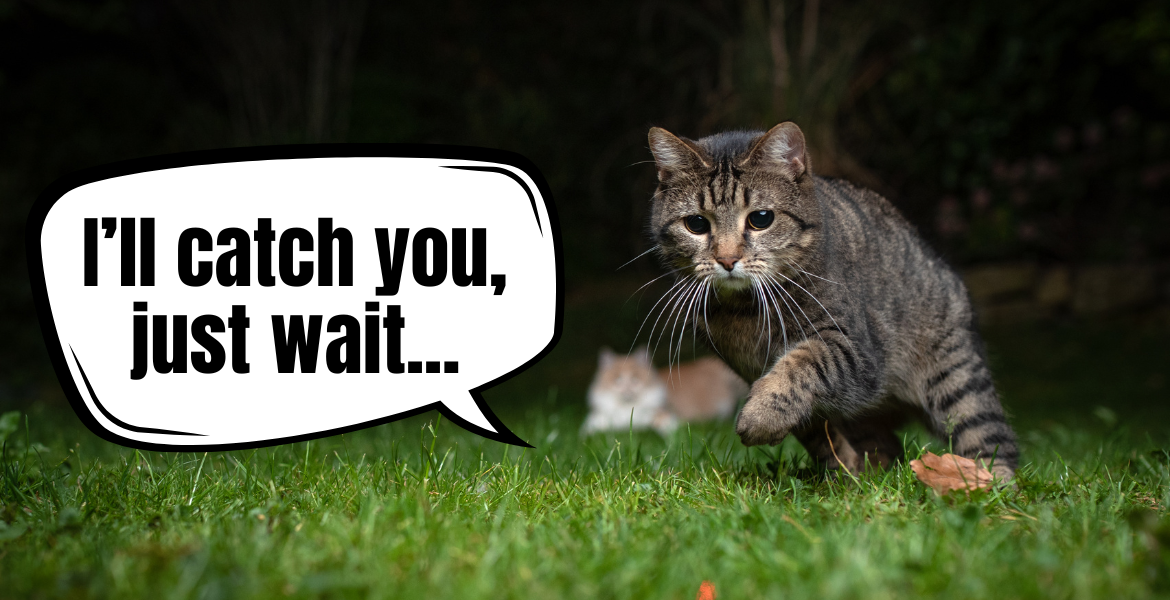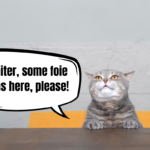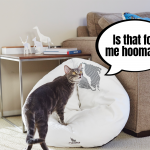For an informed fabCat, this information is no surprise, but it’s worth reminding those sitting at the back of the class from time to time: house cats are born hunters. In fact, they are highly effective predators, skilled in the arts of stealth, observation, and ambushing their prey. And yet, they pose as fluffy, harmless furballs, right? Due to their hunting instincts, both feral and outdoor cats pose a serious threat to local ecosystems—they are predators that, in our environment, are essentially an invasive species. Why bring this up today? Because on World Bird Day, dear fabCats, we’re going to talk about the consequences of letting cats roam freely and how we, their Guardians, can satisfy their hunting instincts in a home environment. Contrary to popular belief, it’s entirely possible!
Is letting your cat outside a good idea?
The simplest answer is: no. If we care about the safety of our furry companions and don’t want to disrupt the natural balance of the environment, a house cat’s place is indoors: on the couch, the windowsill with a view of the world, a favorite scratching post, a well-netted catio, but without free access to “freedom.” Why? There are several reasons:
Lurking dangers. The risk of getting hit by a car is not the only threat Guardians face when they let their cats outdoors. The more domesticated a cat is, the more trusting they become of humans and the less aware they are of the dangers around them. Unfortunately, there are many unkind people out there, and almost every day we see stories online of someone’s cat being poisoned, injured, attacked by a dog, or even shot with a pellet gun. It only takes your cat stepping into the wrong neighbor’s yard or crossing paths with a neighborhood bully. Tragedy can strike easily these days.
The dangers faced by outdoor cats aren’t limited to encounters with humans. Often, they include natural threats like other predators, unfamiliar cats eager to defend their territory, or small animals that your cat may hunt but which can carry diseases. Your cat might also encounter rat poison, get stuck in a narrow gap they tried to squeeze through, or simply get lost when night falls, rain starts, or the area becomes unrecognizable.
Environmental threat. Cats are exceptionally efficient predators, and unfortunately, they don’t choose their prey based on endangered species lists—they hunt whatever they can catch. They are, of course, extremely helpful where rodent control is needed, such as on farms. However, remember that the prey we see (for example, when your cat brings home their “trophies” to show off) is only a fraction of what your cat actually hunts and consumes. According to data published in Global Ecology and Conservation in 2019, a single farm cat could be responsible for up to 250 kills a year. That doesn’t seem like much, but if you consider the number of farms in your country alone and estimate that each has an average of 0.89 cats, the number of feline victims suddenly reaches into the millions.
Can every cat adapt to living indoors?
Of course not. As a society, we’re at a stage where the population of feral, unneutered cats, allowed to roam freely and breed uncontrollably, is enormous. These cats are often semi-feral and, while they may tolerate living around humans, won’t adapt to typical indoor life. We acknowledge this and don’t advocate for suddenly confining all these cats to four walls. However, it’s worth thinking about what we, as a community of cat lovers, can do to improve the situation in the future. This might involve neutering cats, both those living freely and those allowed outside, to prevent uncontrolled breeding. A single female cat can have several litters a year. No shelter, foster home, or charity has the resources to care for them all.
Moreover, when we decide to take a cat under our care, let’s do everything we can to ensure they have the right conditions to live happily indoors. After all, they’re a house cat. Properly raised, socialized, with access to all necessary resources and enough exercise at home, they can live a perfectly fulfilling life without free access to the outside world. And if you really want your cat to explore, a harness and leash are always an option.
“My cat doesn’t hunt…”
Maybe they’re the exception to the rule, but we’ve been surrounded by cats for years, and we know that even the biggest couch potatoes have the hunter gene inside them. When the right motivator appears on the horizon, they’ll start hunting without a second thought. In such situations, their inner wild cat takes over, finding joy in watching and chasing potential prey. There’s no deeper philosophy to it
Will a cat that has all their needs met indoors still hunt? Yes. Even if their bowl is always full, the litter box is always clean, and their human is ready to play whenever the cat wants. And we’re talking about play that satisfies the cat’s hunting cycle. These cats will also hunt if given the chance. Why? For fun, to release energy, or for practice. Hunting is instinctive for cats, and a fleeing prey is the perfect toy. It doesn’t need to be eaten—just the thrill of the chase and capture is enough to satisfy the cat.
Predator at home: how to release your cat’s energy through play?
And this brings us to the crux of the matter: the role of the Guardian in a cat’s life. As the Little Prince said, you are responsible for what you tame. And he didn’t just mean feeding and cleaning up after our feline friends. To keep a cat happy and fulfilled at home, remember that:
Play should follow the hunting cycle. It’s not just about tossing a ball or absentmindedly waving a wand toy while you stir dinner. For a cat, play is hunting, and the best prey is the one that runs away. So, when you pick up the cat wand, engage 120%. Enter the cat’s ritual. Let the wand be an extension of your hand. Feel like the prey—hide, let yourself be stalked, let the cat sneak up. The chase doesn’t have to be a frantic run—often, it’s minutes of observation, making the hunt quick and efficient. Let your cat observe, then allow them to make the kill. And don’t take the toy away immediately—let the cat “tear it apart,” then end the session with treats or a meal. This completes the hunting cycle, leaving your cat feeling satisfied.
You can read more about the hunting cycle during playtime here: https://blog.mykotty.pl/en/2023/02/21/all-or-nothing-how-does-your-tigger-hunt/
Play regularly. We’re all tempted to skip playtime with our cats sometimes—after all, they’re lounging comfortably on the couch and not begging for it. But it’s important to maintain a daily routine. Cats live for rituals! Make sure play happens during their natural active hours, usually in the morning and/or evening. It’s a great way to ensure peaceful home office work and restful nights
A good toy is…? Every fabCat knows the best cat toys are often things that aren’t toys at all—candy wrappers, sticks, straws, boxes… Cats love them. But it’s essential to distinguish between toys cats like to play with on their own and those that satisfy their hunting cycle. The former, as long as they’re safe, are great to have at home for enriching the environment—scratchers, boxes, climbing shelves, our myKotty Kung Fu Cat Toys with the best catnip and valerian mix in the neighborhood, you choose. Cats will use up their energy on these throughout the day. But when it’s time for hunting, reach for a proper wand toy. This way, you control it, move it like prey, and make your cat feel like they’re on a real hunt. It’s an art that takes practice, but the results are incredibly rewarding—your cat will be overjoyed.
And finally…
Have fun, fabCat! Sharing life with a cat is by no means a burden where your role is reduced to litter box cleaner, food provider, balcony doorman, or wand-waver. It’s a highly satisfying arrangement where you gain an irreplaceable, purring friend, a companion for evening movie sessions, a private singer, and an endless comedy show starring your cat—all in exchange for making small adjustments to your life to meet your cat’s needs. And if you don’t have the time or desire for that, owning a cat isn’t a must—you can always visit a cat café, spend a few hours with the felines, and go home without worrying about the fluffy hunter ready to pounce.





